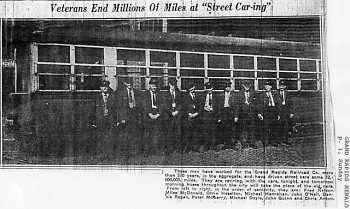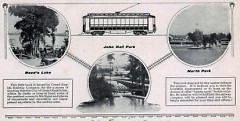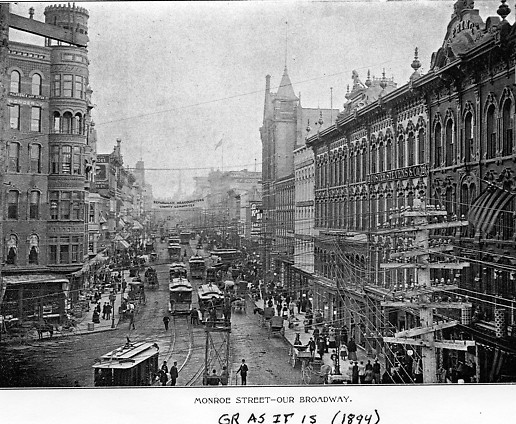Carl Bajema, retired GVSU biology professor and local historian, is intent on bringing to life Grand Rapids’ transportation history. He's currently revising the drafts for the second book in a local transportation series, tentatively titled "The History of Grand Rapids Street Cars." Readers will be transported to the late 19th century and the experiences of riding the latest transportation invention: electric trolley cars. His repertoire of writings includes numerous articles on early transportation history, including his first book, "The Lake Line," an account of the Grand Rapids, Grand Haven and Muskegon Railway.
Bajema is currently seeking any historical information local citizens may have about street cars to assist in a complete presentation for his book.
The importance of streetcar transportation for the working class is one of the themes behind Bajema's research for this current title.
"[The] wealthy didn’t need this,” Carl says, but working class citizens did. The work week was 48-60 hours and streetcars provided not only transportation to the work but when relieved of that responsibility, the workers and their families could then ride to visit friends, shop, or enjoy the three resorts that kept the streetcars busy from John Ball Park to North Park to Ramona Park.
All three of these now well known parks actually began life as resorts that were connected by the streetcar lines owned by Jeremiah Boynton. The first streetcar from downtown to Ramona Park at Reed’s Lake was in July of 1875. A huge social innovation for the time, only the wealthier families could afford the time consuming and costly transportation through dense forest and undeveloped land on the outskirts of the city to the resorts. With a five-cent fare on the streetcar line, however, the working class could now join the wealthy class for an afternoon at the lake or hillside park or river. Each of the resorts offered free as well as paid entertainment in order to include anyone attending. Grand Rapids Railway Company actually subsidized bands to provide free music at John Ball Park in order to keep people paying the five-cent fare back and forth.
Downtown, streetcar transportation morphed from horse cars to cable cars to steam dummy passenger trains, electric streetcars and finally electric interurban cars. There was a “little yellow house in Campau Square” where a dispatcher would watch for the proper timing of the cars passing and send info ahead to avert any mishaps. The Grand Rapids Public Museum still has an original horse car in the display of “Streets of Old Grand Rapids,” a permanent exhibit.
In the early 1920s, fire destroyed more than 50 streetcars of the Grand Rapids Railway Company. The vice-president and manager, Louis Delamarter, was ecstatic that he could now rebuild his cable cars with the insurance money utilizing a plan he had conceived to use electric cable above the street. As a result, Grand Rapids became the world’s expert on electric cable car transportation while streetcar builders and railway managers from as far as Australia, Germany and Japan, visited to learn about building the more efficient electric streetcar.
Thomas Maas, local technical illustrator, has produced more than 25 maps that will be included in the book. Maas and Bajema have also constructed color maps of streetcar routes drawn on nineteenth century birds-eye view maps of Grand Rapids. Maas and Roy Benedict, a nationally known streetcar history expert, have reviewed the early drafts of Bajema's manuscript. Libraries and museums as well as individuals have also allowed him to copy hundreds of ephemera of the streetcar era that will make the history come alive to the reader. Before this book will be completely ready for publication however, Bajema would like to find a few more illustrations. He is not only interested in original documents, but also scans or quality copies of maps and photos of the streetcar era and daily report forms as well as publications of that time such as Street Railway Weekly, Token and Trolley Topics.
Professor Bajema delights in telling of his decades of research with fascinating stories of his explorations of so many Michigan localities and backwoods quagmires. His research began with logging transportation, branched into railway and streetcar transportation and he is finally ready to begin his third Michigan history book which was his first idea: logging transportation.
Watch for Bajema's second book on the history of streetcars in late fall of 2015 or early 2016. Taking a look at his meticulous work will indulge your curiosity of times gone by.
The Rapidian, a program of the 501(c)3 nonprofit Community Media Center, relies on the community’s support to help cover the cost of training reporters and publishing content.
We need your help.
If each of our readers and content creators who values this community platform help support its creation and maintenance, The Rapidian can continue to educate and facilitate a conversation around issues for years to come.
Please support The Rapidian and make a contribution today.


